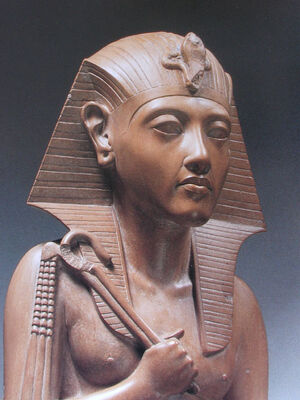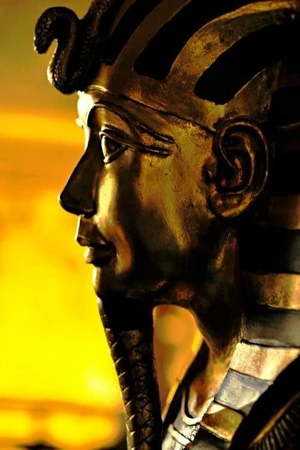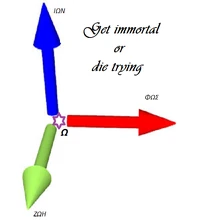Θουωρίς
Twosret, Thuoris, Alcandra, Αλκάνδρα
Pharaohs, Nineteenth dynasty of Egypt

(σύγχρονη αναπάρασταση)

(Γυναίκες-φαραώ)
Μέρνεθις
(1η Δυναστεία)
Αξενσεπίς
(6η Δυναστεία)
Σκεμίοφρις
(12η Δυναστεία)
Χατσεψούδη
(18η Δυναστεία)
Νεφερτίτη
(18η Δυναστεία)
Θούωρις
(19η Δυναστεία)
Κλεοπάτρα ΣΤ'
(33η Δυναστεία)
Βερενίκη Δ'
(33η Δυναστεία)
Αρσινόη Δ'
(33η Δυναστεία)
Κλεοπάτρα Ζ'
(33η Δυναστεία)

Αίγυπτος Ηγεμόνες Αιγύπτου Ηγεμόνες Ελληνιστικής Αιγύπτου Αιγυπτιακή Αυτοκρατορία Ηγεμόνες Αιγυπτιακής Αυτοκρατορίας
>>Αρχαιο-Αιγυπτιακή<< Δυναστεία 0α (0a) Δυναστεία 0β (0b) Δυναστεία 1η (I) Δυναστεία 2η (II)
>>Παλαιο-Αιγυπτιακή<< Δυναστεία 3η (III) Δυναστεία 4η (IV) Δυναστεία 5η (V) Δυναστεία 6η (VI)
>>Πρώτη Ενδιάμεση<< Δυναστεία 7η (VII) Δυναστεία 8η (VIII) Δυναστεία 9η (IX) Δυναστεία 10η (X) Δυναστεία 11α (XIa)
>>Μεσο-Αιγυπτιακή<< Δυναστεία 11β (XIb) Δυναστεία 12η (XII)
>>Δεύτερη Ενδιάμεση<< Δυναστεία 13η (XIII) Δυναστεία 14η (XIV) Δυναστεία 15η (XV) Δυναστεία 16ης (XVI) Δυναστεία 17η (XVII)
>>Υστερο-Αιγυπτιακή (New)<< Δυναστεία 18η (XVIII) Δυναστεία 19η (XIX) Δυναστεία 20η (XX)
>>Τρίτη Ενδιάμεση<< Δυναστεία 21η (XXI) Δυναστεία 22η (XXII) Δυναστεία 23η (XXIII) Δυναστεία 24η (XXIV)
>>Νεο-Αιγυπτιακή (Late)<< Δυναστεία 25η (XXV) Δυναστεία 26η (XXVI) Δυναστεία 27η (XXVII) Δυναστεία 28η (XXVIII) Δυναστεία 29η (XXIX) Δυναστεία 30η (XXX) Δυναστεία 31η (XXXI) Δυναστεία 32η (XXXII) Δυναστεία 33η (XXXIII)
Σουμερία (Sumer) Ηγεμόνες Σουμερίας
Ακκαδία (Akkad) Ηγεμόνες Ακκαδίας
Συρία (Martu) Ηγεμόνες Συρίας
Ισραηλία (Israel)Ηγεμόνες Ισραηλίας
Ιουδαία (Judash) Ηγεμόνες Ιουδαίας
Φοινίκη (Phoenicia) Ηγεμόνες Φοινίκης
Ασσυρία (Assyria) Ηγεμόνες Ασσυρίας
Βαβυλωνία (Babylonia) Ηγεμόνες Βαβυλωνίας
Μιταννία (Mitanni) Ηγεμόνες Μιταννίας
Χετταϊκή Αυτοκρατορία (Hatti) Ηγεμόνες Χετταϊκής Αυτοκρατορίας
Μυκηναϊκή Ελλάδα (Mycenaean Greece) Ηγεμόνες Μυκηναϊκής Ελλάδας
- Βασίλισσα (φαραώ) της Αιγύπτου (1191 - 1189 π.Χ.)
- Χρονική Περίοδος Διακυβέρνησης: Υστερο-Αιγυπτιακή Εποχή, 12ος Αιώνας π.Χ.
- Γέννηση:
- Θάνατος:
Ετυμολογία[]
| της Αιγύπτου
|
|---|
| 19η Δυναστεία XIX |
|
- Το όνομα "Θουωρίς" είναι εξελληνισμός του ονόματος "Twosret" που είναι Αιγυπτιακής προέλευσης.
Ονομασία[]
Οι διάφορες ονομασίες τις οποίες έλαβε (ή με τις οποίες αναφέρεται στην ιστορία) είναι:
- Hor-?
- Sat-Re Merit-amun ( = Daughter Of Re ; Beloved Of Amun)
- Ta-weseret Setep-en-Mut (= Mighty Lady ; Chosen Of Mut)
Ταύτιση[]
Ο Μανέθων (ή οι αντιγραφείς του), μάλλον εκ λάθους, αναφέρει φαραώ με το όνομα "Θούωρις" ως άνδρα που όμως είναι η Θουωρίς, γυναίκα-φαραώ.
(Το ίδιο λάθος κάνει με όλες τις γυναίκες-φαραώ).
Ο Όμηρος αναφέρει, την ίδια εποχή, μία Αιγύπτια βασίλισσα με το όνομα "Αλκάνδρα" που προφανώς ταυτίζεται με την παρούσα. (ίσως το συνθετικό του ονόματός της ("αλκή") να είναι τελικά ευθεία μετάφραση του "Taweret" που επίσης σημαίνει "ισχύς")
Γενεαλογία[]
- Πατέρας:
- Μητέρα:
- Σύζυγος:
- Τέκνα:
Βιογραφία[]
Τα σημαντικότερα ιστορικά γεγονότα, κατά την διάρκεια της βασιλείας της, είναι:
Queen Twosret (Tawosret, Tausret) was the last known ruler and the final Pharaoh of the Nineteenth Dynasty. She is recorded in Manetho's Epitome as a certain Thuoris, who in Homer is called Polybus, husband of Alcandara, and in whose time Troy was taken.[1] She was said to have ruled Egypt for seven years, but this figure included the nearly six-year reign of Siptah, her predecessor.[2] Twosret simply assumed Siptah's regnal years as her own. While her sole independent reign would have lasted for perhaps one to one-and a half full years from 1191 to 1189 BC, this number appears to be more likely to be two full years instead today. Excavation work by the University of Arizona on her mortuary temple at Gournah strongly suggests that it was completed in her reign and that Twosret may have even started a regnal year 9 which means that she had 2 independent years of rule once one deducts the nearly 6 year reign of Siptah. Her royal name, Sitre Meryamun, means "Daughter of Re, beloved of Amun."[3]
Family[]
Queen Twosret is thought to have been a daughter of Merenptah, possibly a daughter of Takhat, thereby making her sister to Amenmesse. She was thought to be the second royal wife of Seti II. There are no known children for Twosret and Seti II, unless KV56 represents the burial of their daughter.[4]
Queen, Regent and Pharaoh[]
Theodore Davis identified the Queen and her husband in a cache of jewelry found in tomb KV56 in the Valley of the Kings. This tomb also contained objects bearing the name of Rameses II. There is no consensus about the nature of this tomb. Some (Aldred) thought this was the tomb of a daughter of Seti II and Tawosret, but others (Maspero) thought this was a cache of objects originally belonging with the tomb of Tawosret herself.[5]
After her husband's death, she became first regent to Seti's heir Siptah jointly with Chancellor Bay, whom some have identified as the Irsu mentioned in the Harris Papyrus. Siptah was likely a stepson of Twosret since his mother is now known to be a certain Sutailja or Shoteraja from Louvre Relief E 26901.[6] When Siptah died, Twosret officially assumed the throne for herself, as the "Daughter of Re, Lady of Ta-merit, Twosret of Mut",[7] and assumed the role of a Pharaoh.
While it was commonly believed that she ruled Egypt with the aid of Chancellor Bay, a recently published document by Pierre Grandet in a BIFAO 100 (2000) paper shows that Bay was executed on Siptah's orders during Year 5 of this king's reign. The document is a hieratic ostracon or inscribed potshard and contains an announcement to the workmen of Deir El-Medina of the king's actions. No immediate reason was given to show what caused Siptah to turn against "the great enemy Bay," as the ostracon states. The recto of the document reads thus:
- Year 5 III Shemu the 27th. On this day, the scribe of the tomb Paser came announcing 'Pharaoh, life, prosperity, and health!, has killed the great enemy Bay'.[8]
This date accords well with Bay's last known public appearance in Year 4 of Siptah. The ostraca's information was essentially a royal order for the workmen to stop all further work on Bay's tomb since the latter had now been deemed a traitor to the state.[9]
End of Twosret's reign[]
Twosret's reign ended in a civil war which is documented in the Elephantine stela of her successor Setnakhte who became the founder of the Twentieth dynasty. It is not known if she was overthrown by Setnakhte or whether she died peacefully in her short reign; if the latter is the case, then a struggle must have ensued among various factions at court for the throne in which Setnakhte emerged victorious. However, Setnakhte and his son Ramesses III described the late 19th dynasty as a time of chaos. Setnakhte usurped the joint KV14 tomb of Seti II and Twosret but reburied Seti II in tomb KV15, while deliberately replastering and redrawing all images of Twosret in tomb KV14 with those of himself. Setnakhte's decisions here demonstrate his dislike and presumably hatred for Twosret since he chose to reinter Seti II but not Twosret.[10]
Setnakhte's son, Ramesses III, later excluded Twosret and even Siptah of the 19th dynasty from his Medinet Habu list of Egyptian kings thereby delegitimizing them in the eyes of the citizenry.[11] It appears more likely that Setnakhte overthrew Twosret from power in a civil war.
Twosret's highest known date is a Year 8 II Shemu day 29 hieratic inscription found on one of the foundation blocks (FB 2) of her mortuary temple at Gournah in 2011 by Richard Wilkinson's University of Arizona Egypt expedition team.[12] Since this was only a foundation inscription and Twosret's temple, although never finished as planned, was at least partially completed, it is logical to assume that some time must have passed before her downfall and the termination of work on her temple project. Richard Wilkinson stressed that Twosret's mortuary temple was "largely structurally completed," although bearing minimal decoration,[13] therefore, she would have ruled for several more months beyond II Shemu 29 of her 8th Year for her temple to reach completion. She could, hence, have possibly ruled for 6 more months and nearly started her 9th regnal year around the interval of IV Akhet/I Peret—when her husband died (since she assumed Siptah's reign as her own)--before she was overthrown by Setnakhte. Or she could have even started a brief 9th regnal year and had 8 full years of rule (a figure which includes the 6 year reign of Siptah her predecessor).
Monuments and Inscriptions[]
It is believed that expeditions were conducted during her reign to the turquoise mines in Sinai and in Palestine and statues have been found of her at Heliopolis and Thebes. Her name is also found at Abydos, Hermopolis, Memphis, and in Nubia.
Inscriptions with Twosret's name appear in several locations:
- The Bilgai Stela belonged to Twosret. It records the erection of a monument in the area of Sebennytos.[14]
- A pair statue of Tawosret and Siptah is now in the Munich Glyptotek (no 122). Siptah is shown seated on Twosret's lap.[14]
- In the temple at Amada, Twosret is depicted as a Great Royal Wife and God's Wife.[14]
- A statue from Heliopolis depicts Twosret and her names are inscribed with a mixture of male and female epithets. Twosret herself is depicted as a woman.[14]
- A cartouche of hers believed to come from Qantir in the Delta has been found
- Twosret and Siptah's names have been found associated with the turquoise mines at Serabit el Khadim and Timna (in the Sinai).[15]
- A faience vase bearing a cartouche of Twosret was found at Tell Deir Alla in Jordan.[15]
- Twosret constructed a Mortuary temple next to the Ramesseum, but it was never finished and was only partially excavated (by Flinders Petrie in 1897), although recent re-excavation by Richard H. Wilkinson shows it is more complex than first thought. The temple is being excavated by the Tausert Temple Project (2004 to present).
Χρονολογία[]
Οι διάφορες χρονολογίες της βασιλείας της από διακεκριμένους Αιγυπτιολόγους, αρχαίους και νεώτερους, είναι:
Ταφή[]
Οι πληροφορίες που αφορούν τον τάφο και το μομμιοποιημένο σώμα (μούμια) της είναι:
Twosret's KV14 tomb in the Valley of the Kings has a complicated history; it was started in the reign of Seti II. Scenes show Tawosret accompanying Siptah, but Siptah's name had later been replaced by that of Seti II. The tomb was then usurped by Setnakht, and extended to become the deepest royal tomb in the valley while Tawosret's sarcophagus was reused by Amenherkhepeshef in KV13. Altenmuller believes that Seti II was buried in one of the rooms in KV14 and later reburied in KV15. Others question this scenario.[16]
A mummy found in KV35 and known as Unknown Woman D has been identified by some scholars as possibly belonging to Twosret, but there is no other evidence for this other than the correct Nineteenth Dynasty period of mummification.[1]
Υποσημειώσεις[]
- ↑ 1,0 1,1 J. Tyldesley, Chronicle of the Queens of Egypt, 2006, Thames & Hudson
- ↑ Erik Hornung, Rolf Krauss & David Warburton (editors), Handbook of Ancient Egyptian Chronology, Brill: 2006, p.214
- ↑ Clayton, p.158
- ↑ Aidan Dodson & Dyan Hilton: The Complete Royal Families of Ancient Egypt. Thames & Hudson, 1987 ISBN 0-500-05128-3
- ↑ Theban Mapping Project Tomb 56
- ↑ Gae Callender, The Cripple, the Queen & the Man from the North, KMT Volume 17, No.1 (Spring 2006), p.52
- ↑ Tydlesey, Joyce (2006) "The Complete Queens of Egypt"(American University in Cairo Press)
- ↑ Pierre Grandet, "L'execution du chancelier Bay O.IFAO 1864", BIFAO 100(2000), pp.339-345
- ↑ Gae Callender, The Cripple, the Queen & the Man from the North, KMT, Spring 2006, p.54
- ↑ Hartwig Altenmüller, "The Tomb of Tausert and Setnakht," in Valley of the Kings, ed. Kent R. Weeks (New York: Friedman/Fairfax Publishers, 2001), pp.222-31
- ↑ Epigraphic Survey, Medinet Habu IV: Festival Scenes of Ramesses III, University of Chicago Oriental Institute Publications, vol. 51 (Chicago: The University of Chicago Press, 1940), pl. 203. Cf. Donald B. Redford, Pharaonic King-Lists, Annals, and Day-Books: A Contribution to the Study of the Egyptian Sense of History, SSEA Publication 4 (Mississauga, Canada: Benben Publications, 1986), pp.36-37
- ↑ Now labeled Foundation Block Text 4. See Richard Wilkinson, “Tausert Temple Project: 2010-11 Season,” The Ostracon: The Journal of the Egyptian Study Society, 22 (Fall 2011), 8, fig. 4. Additional foundation inscriptions were discovered in previous seasons. Foundation Block Text 2 was found in the 2007 excavation season and bears the date “Regnal Year seven, I Akhet 23,” and this is the earliest dated inscription found at the temple, so construction most likely began late in the latter half of year seven. The original publication with a mistranslation of this inscription is idem, "Tausert Temple Project: 2007 Season," The Ostracon, 18, No. 1 (Summer 2007), 7, fig. 9. The corrected translation appears in idem, “Tausert Temple Project: 2008 Season,” The Ostracon, 19, No. 1 (Fall 2008), p.7.
- ↑ Richard H. Wilkinson, “History of the Temple,” in The Temple of Tausret: The University of Arizona Egyptian Expedition Tausret Temple Project, 2004-2011, p.166.
- ↑ 14,0 14,1 14,2 14,3 Vivienne G. Callender, Queen Tausret and the End of Dynasty 19, Studien zur Altägyptischen Kultur, Bd. 32, (2004), pp. 81-104
- ↑ 15,0 15,1 Itamar Singer, Merneptah's Campaign to Canaan, Bulletin of the American Schools of Oriental Research, No. 269 (Feb., 1988), pp. 1-10
- ↑ Theban Mapping Project, Tomb KV14
Εσωτερική Αρθρογραφία[]
- 19η Δυναστεία (XIX)
- Ηγεμόνες Αρχαίας Αιγύπτου
- Ηγεμόνες Αιγύπτου
- Αίγυπτος
- Αρχαία Αίγυπτος
- Αιγυπτιακή Αυτοκρατορία
- Αιγύπτιοι
- Αιγύπτιοι Θεοί
Βιβλιογραφία[]
- Gae Callender, The Cripple, the Queen & the Man from the North, KMT, Vol:17 No.1, Spring 2006, pp. 49–63
- Leonard H. Lesko, A Little More Evidence for the End of the Nineteenth Dynasty, Journal of the American Research Center in Egypt, Vol. 5, (1966), pp. 29–32 (accessible through JSTOR)
Ιστογραφία[]
|
Αν και θα βρείτε εξακριβωμένες πληροφορίες "Οι πληροφορίες αυτές μπορεί πρόσφατα Πρέπει να λάβετε υπ' όψη ότι Επίσης, |
- Μην κάνετε χρήση του περιεχομένου της παρούσας εγκυκλοπαίδειας
αν διαφωνείτε με όσα αναγράφονται σε αυτήν
- Όχι, στις διαφημίσεις που περιέχουν απαράδεκτο περιεχόμενο (άσεμνες εικόνες, ροζ αγγελίες κλπ.)
